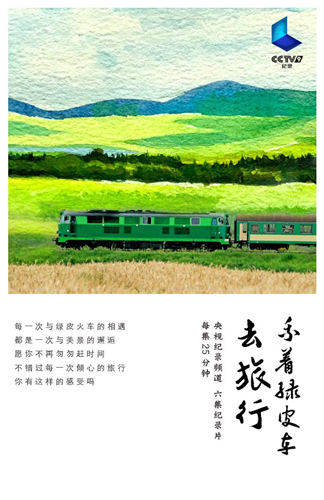 |
|
A scene from the first episode of the CCTV documentary The Slow Train Home shows passengers and crew on board the No 5633 train on the Chengdu-Kunming route. [Photo provided to China Daily] |
A documentary series soon to be aired on CCTV tells stories of China's legendary green trains.
Television producer Ren Chongrong remembers the day when she crawled through a window to board a train that was headed from Beijing to her hometown Chongqing in 1994.
It was during a winter vacation for Ren, then a student at China Journalism College, which was based in Beijing and shut down in 2002.
After being literally pushed into the crowded carriage by two classmates, she found that the train started moving before the other two youngsters could get on board.
It was a "green-skinned" train, which was slow and crowded, and the journey was unforgettable, she says.
"As I failed to purchase a seat ticket, I sat with the luggage alone on the train floor for more than 30 hours," says Ren, 45, now working with state broadcaster China Central Television.
But the tough journey also provided Ren with spectacular views.
Along the route which stretches nearly 2,000 kilometers, she saw plains, hilly terrain, mountains and village houses. And that is etched in her mind and is an inspiration for the upcoming The Slow Train Home, a six-episode documentary series to air on CCTV's documentary channel from Oct 22 to 27, with a 25-minute episode being shown each night.
Featuring at least one passenger on a green train, the documentary was filmed by six teams comprising a total of 34 members who trekked totally 3,000 kilometers to cross more than 40 villages in the provinces of Guizhou, Sichuan, Heilongjiang and Shanxi, among others, and the Xinjiang autonomous region.
Green trains, once a major transport facility that was used from the 1950s until 1990s, are so named for the color of their external paint.
Their trademark characteristics include being powered by coal, running at a slow pace and shabby interiors without air conditioning or sleeper beds.
 |
|
A poster of the TV documentary. [Photo provided to China Daily] |
Now, with the expansion of high-speed train networks, these old-fashioned people carriers have mostly been phased out, with some still in operation to connect largely to remote or mountainous areas.
"But I believe the green slow trains have become an integral part of the collective memory of a generation, and a few still act as an important means to transport villagers in poverty-stricken areas," says Ren.
She adds that the slow trains, which are much cheaper and have nearer stations, are more affordable and effective especially in rural areas.
In the first episode of the series, travel writer Qi Dong alongside old-fashioned train enthusiast Ma Hao take a ride on the Chengdu-Kunming railway, a major line of around 1,000 kilometers between the two cities-the respective capitals of the provinces of Sichuan and Yunnan.
In the course of their trip the duo encounter a series of unlikely passengers: A local herder who is traveling with 58 sheep, an ethnic Yi bride wearing gold jewelry on her way to meet her future husband in a remote village and a teenager going to pick up her younger brother from his primary school at the next station.
The ticket costs the herder 7.5 yuan ($1.09), and he doesn't need to pay for the sheep that he has brought along on the train to be sold at a market.
As for the siblings, they spend an hour climbing a mountain to get home.
"It's a train of stories of poverty and a hard life, but it's also a train full of hope," says Qi in the documentary.
 |
|
A steam train in Jiayang, Sichuan province, in the third episode. [Photo provided to China Daily] |
The second episode is interwoven with a Uygur poet's journey to the place his grandfather was born and raised in the southern part of Xinjiang. And it features the No 7556, an Urumqi-Kashgar train, which covers China's longest "green-skinned" train route.
The entire distance is nearly 1,600 kilometers but it costs less than 80 yuan for a seat ticket.
In the third episode the focus is a steam-engine train in southern Sichuan, among the last few of this kind in the world.
And in the fourth, the makers of the series follow an art teacher on the Qiqihar-Heihe train in search of endangered red-crowned cranes and the ethnic Oroqen hunters in northeastern China.
As for the fifth episode, it features a diehard fan of renowned writer Shen Congwen on the Sichuan-Chongqing train who is exploring the mountainous town of Chadong, which inspired Shen's 1934 classic novel Border Town.
Finally, in the sixth episode, a music teacher and a PhD student trace the roots of a Jiangzhou Drum performance, an art form that dates back to around 1,400 years.
Speaking about the series, Ren says: "We hope the documentary will remind audiences of how wonderful life could be if you slow down the pace."

Presented by Chinadaily.com.cn Registration Number: 10023870-7
Copyright © Ministry of Culture, P.R.China. All rights reserved